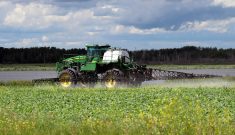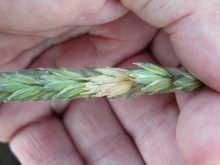Q: Will supply chain issues affect my weed management decisions in 2022?
A: Last year was a challenge due, in part, to drought, but 2022 brings its own challenges with supply chain issues from the ongoing COVID-19 pandemic. These supply chain constraints may negatively affect the shipping of herbicide quantities for use in 2022.
What does this mean for weed management? Weeds are always the constant on the farm, so there is a need to be more strategic with product choice and efficacy.
Read Also

Claas brings 1000 Series SP forage harvesters to Canada
In mid-August, Claas unveiled its new line of Jaguar forage harvesters at an event in Visalia, California, deep in the heart of that state’s dairy region.
One product that may be limited is glyphosate. To manage this potential limitation, growers can use add-on products, with the most abundant options in the pre-seed application. The majority of crop types can be treated with a variety of products that are added to glyphosate as a way to reduce the amount of glyphosate needed. Easy additions of products like florasulam, tribenuron and saflufenacil in cereal crops can provide a boost on tougher-to-kill weeds, like dandelions. Residual herbicide products that have flushing weed control, such as sulfentrazone, can provide multi-week benefits in addition to the initial glyphosate application.
If plans contain an overall reduction of glyphosate rates on the farm, growers should be mindful of water quality such as pH and water hardness. These qualities reduce glyphosate efficacy and the effects are magnified when glyphosate rates are reduced — having less to overcome challenges in the tank.
The first step is to identify water challenges through a simple water test. Adding a pH reducer or a water modifier are great simple solutions.
There are also plenty of in-crop herbicide options that can achieve similar weed control. If growers are using products that are new to them, they should be mindful of new tank-mix orders, water volumes and tank cleanout requirements prior to the season. Using utility modifiers like Valid can provide drift control and enhance product coverage effects that will help maximize herbicide application.
– Brianna Lummerding, PAg, CCA, is the manager of agronomic solutions in north-central Saskatchewan for Nutrien Ag Solutions.















